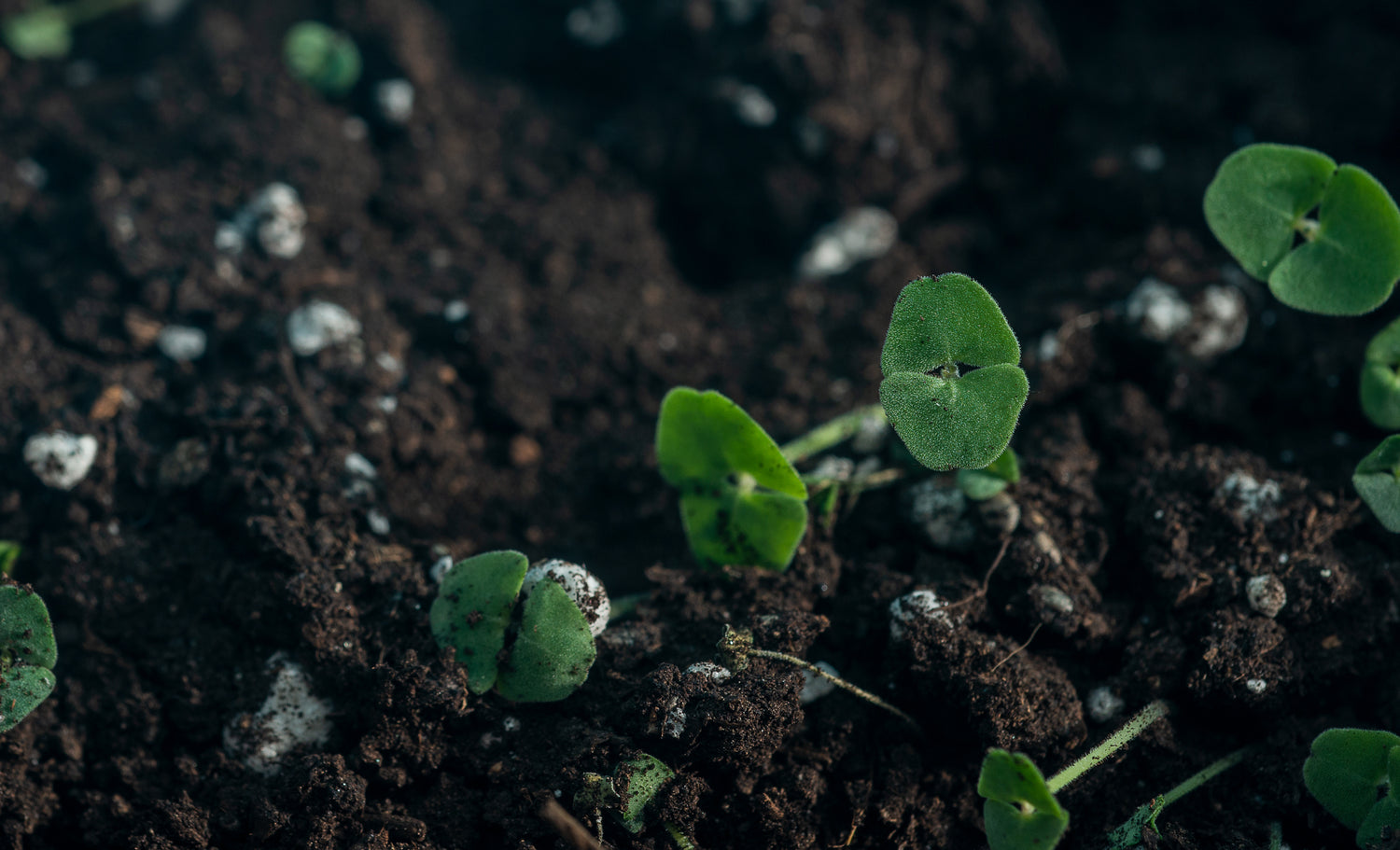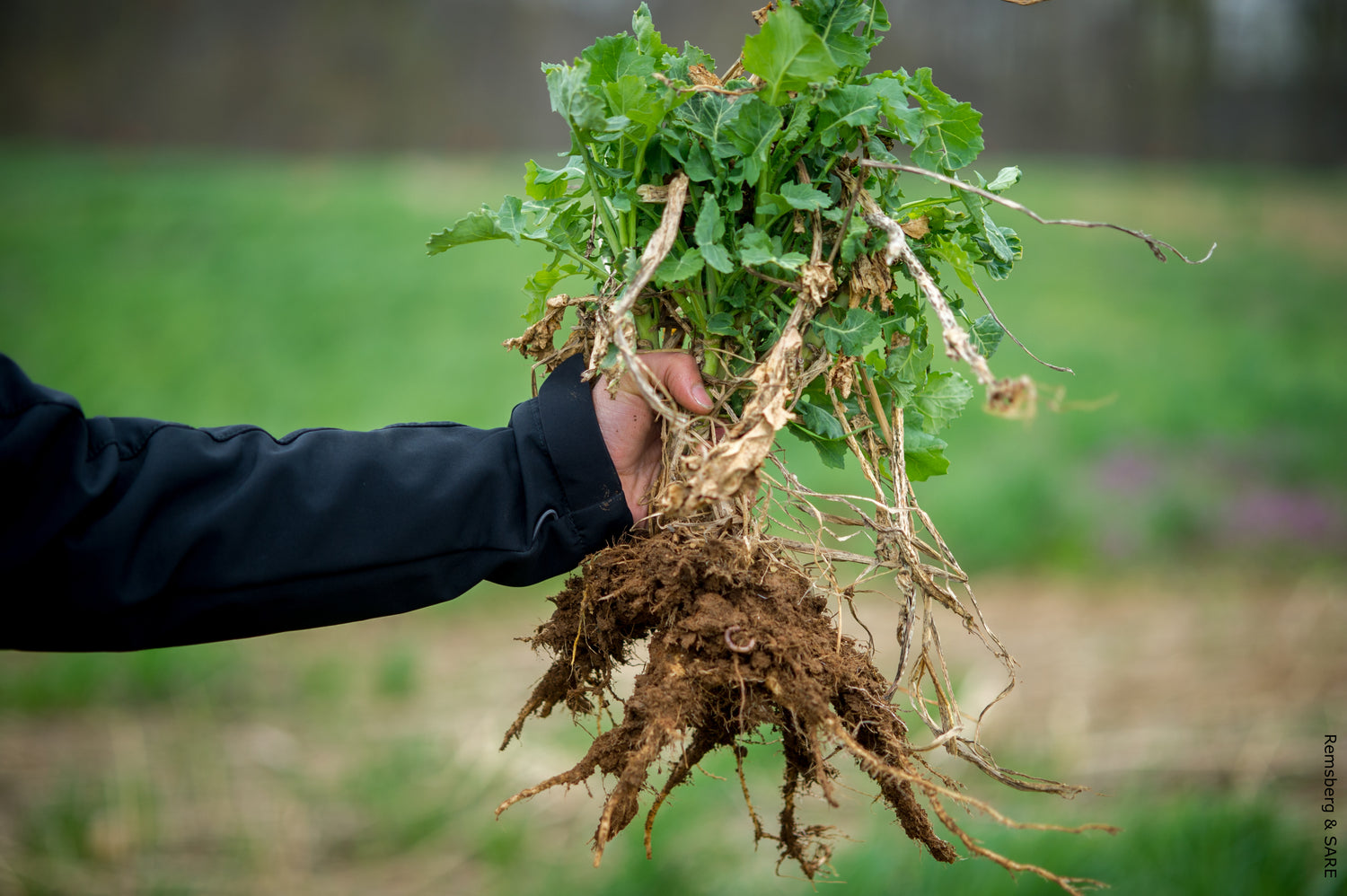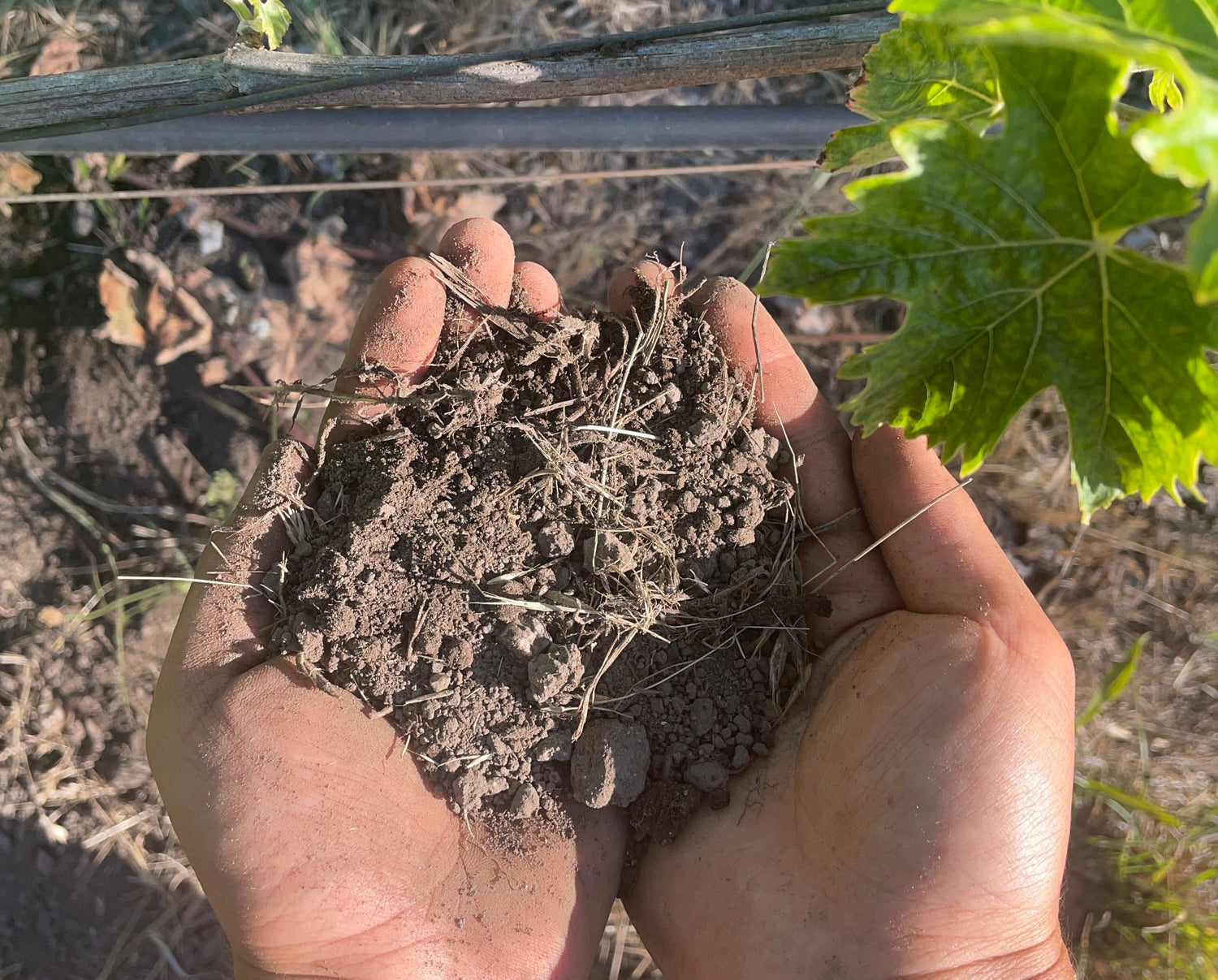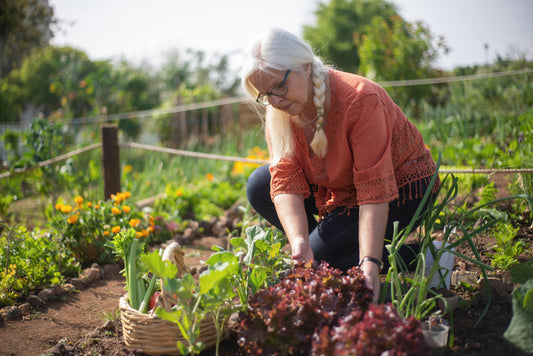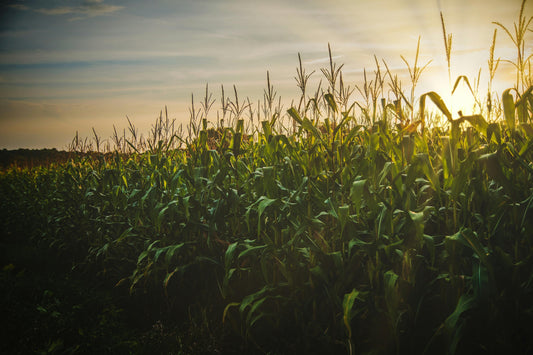The San Francisco Bay Area's soil diversity reflects its complex geological history, from ancient ocean sediments to modern alluvial deposits shaped by tectonic activity and coastal processes. Understanding your local soil type is essential for successful gardening, sustainable agriculture, and environmental stewardship in this ecologically diverse region.
The Bay Area contains five major soil types: fertile alluvial valley soils, widespread Franciscan Complex formations, unique serpentine soils supporting rare plant communities, coastal marine terrace soils, and human-modified urban soils.
San Francisco Bay Area Soils: A Complete Guide to Types, Management, and Conservation
The San Francisco Bay Area encompasses one of California's most geologically complex and soil-diverse regions, spanning nine counties with distinct soil formations that support everything from world-renowned vineyards to endangered plant communities. These soils developed over millions of years through tectonic activity, volcanic processes, sedimentation, and weathering, creating a mosaic of growing conditions that influence agriculture, urban development, and ecosystem conservation throughout the region.
Geological Foundation of Bay Area Soils
The Bay Area's position along the San Andreas Fault system has created extraordinary geological diversity that directly shapes soil development. According to the U.S. Geological Survey, the region contains rocks and sediments ranging from 150 million years old to recent alluvial deposits, each contributing distinct characteristics to overlying soils.
The dominant geological unit, the Franciscan Complex, represents ancient ocean floor materials that were scraped off the oceanic plate and accreted to the North American continent during subduction processes. This complex creates the foundation for much of the region's soil diversity, while more recent alluvial, marine, and volcanic processes have added additional soil types with unique properties and management requirements.
Understanding this geological context is crucial for soil management because parent material largely determines soil chemistry, drainage characteristics, and potential limitations or advantages for different land uses. The USDA Natural Resources Conservation Service emphasizes that soil formation continues today through weathering processes, organic matter accumulation, and ongoing geological activity.
Alluvial Soils: The Agricultural Foundation
Alluvial soils form the backbone of Bay Area agriculture, created by sediment deposition from rivers and streams flowing from surrounding mountain ranges. These soils occupy valley floors throughout the region, including the Santa Clara Valley, Napa Valley, Sonoma Valley, and portions of the East Bay, where they support intensive agriculture and urban development.
Formation and Characteristics
According to the USDA Natural Resources Conservation Service, alluvial soils develop through repeated flooding cycles that deposit layers of sediment carried from upstream watersheds. This process naturally sorts particles by size, creating soils with excellent drainage in upper layers while maintaining water-holding capacity in deeper horizons.
The California Department of Food and Agriculture reports that Bay Area alluvial soils typically contain 2-4% organic matter, significantly higher than many California agricultural soils. This organic matter content results from centuries of vegetation growth and decomposition in valley settings with favorable moisture conditions.
Agricultural Productivity
Alluvial soils support the Bay Area's most productive agricultural operations, from Napa Valley vineyards to Santa Clara Valley orchards. The USDA National Agricultural Statistics Service documents that counties with significant alluvial soil coverage produce some of California's highest-value crops per acre, including wine grapes, specialty vegetables, and tree fruits.
These soils excel in nutrient availability, with natural fertility derived from upstream mineral weathering and organic matter accumulation. However, intensive agriculture can deplete organic matter and nutrients over time, making soil testing and amendment programs essential for maintaining productivity.
Management Considerations
Proper management of alluvial soils focuses on maintaining organic matter levels and preventing soil compaction from heavy machinery or overgrazing. The University of California Cooperative Extension recommends regular cover cropping, organic matter additions, and careful timing of field operations to preserve soil structure.
Franciscan Complex Soils: The Regional Backbone
Franciscan Complex soils underlie approximately 60% of the Bay Area, creating the region's most widespread soil type with highly variable characteristics depending on specific parent materials and weathering conditions.
Geological Origin and Variability
The U.S. Geological Survey describes the Franciscan Complex as a chaotic mixture of sedimentary and metamorphic rocks formed between 150-50 million years ago during ocean floor subduction. This complex includes sandstones, shales, cherts, basalts, and metamorphic rocks that weather into soils with dramatically different properties.
Franciscan Complex soils range from well-draining sandy loams derived from sandstone parent materials to heavy, poorly-draining clays from shale formations. This variability means that soil properties can change significantly over short distances, requiring site-specific management approaches.
Soil Development Patterns
According to the USDA Natural Resources Conservation Service, Franciscan Complex soils typically develop shallow to moderately deep profiles due to ongoing erosion and tectonic activity. Many areas have bedrock within 3-6 feet of the surface, limiting root zone depth and water storage capacity.
Clay-rich Franciscan soils often exhibit shrink-swell behavior, expanding when wet and contracting when dry. This creates challenges for both agriculture and construction, requiring careful water management and soil amendment strategies.
Agricultural and Urban Applications
Franciscan Complex soils support diverse land uses throughout the Bay Area, from dryland grain production to residential development. The California Department of Food and Agriculture notes that these soils can be highly productive when properly managed but often require significant amendments to optimize growing conditions.
Successful management typically involves improving soil structure through organic matter additions, managing drainage to prevent waterlogging in clay soils, and selecting crops or plants adapted to specific soil conditions. Many Bay Area vineyards and rangelands operate successfully on Franciscan Complex soils through careful site selection and management.
Serpentine Soils: Ecological Treasures
Serpentine soils represent one of California's most unique and ecologically significant soil types, covering approximately 1% of the state but supporting about 10% of California's endemic plant species according to the California Department of Fish and Wildlife.
Unique Mineral Composition
Serpentine soils derive from ultramafic rocks containing high levels of magnesium, iron, nickel, and chromium, but low levels of calcium, nitrogen, and phosphorus. The U.S. Geological Survey reports that these unusual chemical conditions create growing environments that exclude most common plant species while supporting highly specialized endemic flora.
The high magnesium-to-calcium ratio in serpentine soils disrupts normal plant nutrition, while elevated levels of heavy metals like nickel and chromium can be toxic to non-adapted species. These conditions have driven the evolution of unique plant communities found nowhere else on Earth.
Ecological Significance
Bay Area serpentine formations support numerous rare and endangered species, including the endangered Bay checkerspot butterfly, which depends on serpentine grasslands for its host plants. The California Native Plant Society documents over 200 plant species endemic to serpentine soils statewide, with significant concentrations in the Bay Area.
Serpentine plant communities include specialized grasslands, chaparral, and woodland types that provide habitat for wildlife species adapted to these unique conditions. Many serpentine areas serve as refugia for native species displaced from other habitats by development and invasive species.
Conservation and Management
The California Department of Fish and Wildlife emphasizes that serpentine soils require specialized conservation approaches. Adding fertilizers or amendments can destroy rare plant communities by allowing non-native species to establish and outcompete native plants adapted to nutrient-poor conditions.
Property owners with serpentine soils should focus on protecting existing native plant communities and removing invasive species through mechanical methods rather than chemical treatments. Many serpentine areas benefit from prescribed burning or grazing management that mimics historical disturbance patterns.
Marine Terrace Soils: Coastal Adaptations
Marine terrace soils occur along the Bay Area's coastal margins, formed from ancient ocean sediments that have been uplifted above current sea level through tectonic processes over the past several million years.
Formation and Distribution
According to the U.S. Geological Survey, marine terraces represent former shorelines that have been elevated by ongoing tectonic uplift along the Pacific Coast. These formations create distinctive flat surfaces at various elevations above current sea level, with soils developed in the overlying marine sediments.
Marine terrace soils typically have sandy to sandy loam textures with good drainage characteristics. The USDA Natural Resources Conservation Service notes that these soils often contain shell fragments and other marine-derived materials that influence soil chemistry and pH levels.
Coastal Environmental Conditions
Marine terrace soils face unique environmental challenges including salt spray exposure, persistent coastal fog, and strong winds. These conditions favor specialized plant communities adapted to maritime climates, including coastal prairie, scrub, and forest vegetation types.
The University of California Cooperative Extension reports that marine terrace soils often have acidic pH levels due to leaching from high rainfall and fog deposition. This acidity influences nutrient availability and plant species selection for both natural vegetation and landscaping applications.
Land Use and Management
Marine terrace soils support important coastal agriculture, including flower production, vegetables, and specialty crops that benefit from cool, fog-moderated climates. These soils also provide critical habitat for endangered coastal species and serve important functions in groundwater recharge and flood control.
Management considerations include protecting against erosion from both wind and water, managing salt exposure in landscaping applications, and preserving native vegetation communities that stabilize coastal bluffs and provide wildlife habitat.
Urban Soils: Human-Modified Landscapes
Urban soils throughout the Bay Area represent complex, human-modified growing media that support millions of residents' gardening, landscaping, and urban agriculture efforts while facing unique challenges related to contamination, compaction, and altered hydrology.
Soil Modification Processes
The USDA Natural Resources Conservation Service defines urban soils as those significantly altered by human activities, including grading, filling, mixing with foreign materials, and contamination from various sources. Bay Area urban soils often contain construction debris, imported fill material, and amendments added over decades of landscape management.
Many urban areas have been built on filled land, particularly around San Francisco Bay margins where historical wetlands were filled for development. These fill materials create highly variable soil conditions that can change dramatically over short distances.
Contamination Concerns
The California Department of Toxic Substances Control identifies several contamination sources in Bay Area urban soils, including lead from pre-1978 paint, petroleum products from former gas stations, and industrial chemicals from manufacturing activities. The California Regional Water Quality Control Board also documents concerns about pesticide residues in some urban soils.
Lead contamination is particularly widespread in older urban areas, especially those built before 1978 when lead-based paints were banned. The Environmental Protection Agency recommends soil testing for lead before establishing vegetable gardens in urban areas, particularly near older buildings or busy roads.
Urban Soil Management
Successful urban soil management begins with comprehensive soil testing to identify contamination, nutrient levels, and physical properties. The University of California Cooperative Extension recommends testing for heavy metals, pH, organic matter content, and basic nutrients before starting urban gardening projects.
Common improvement strategies include adding organic matter to improve soil structure and nutrient content, installing drainage systems to address compaction and poor infiltration, and using raised beds with imported soil for food production in contaminated areas.
Comprehensive Soil Testing Approaches
Effective soil management in the Bay Area requires understanding both general soil type characteristics and site-specific conditions that influence plant growth, environmental quality, and land use suitability.
Basic Soil Assessment
The USDA Natural Resources Conservation Service Web Soil Survey provides essential baseline information about soil types, drainage characteristics, and general management considerations for any Bay Area location. This tool maps soil survey units with detailed descriptions of soil properties, limitations, and typical management needs.
For more detailed analysis, soil testing laboratories can provide comprehensive assessment of pH, nutrient levels, organic matter content, and potential contaminants. The University of California Cooperative Extension recommends testing every 2-3 years for actively managed soils and annually for intensive production systems.
Specialized Testing Needs
Urban and agricultural soils often require specialized testing beyond basic fertility analysis. The California Department of Food and Agriculture requires specific testing protocols for certified organic production, while urban food production may need heavy metal analysis to ensure food safety.
Serpentine soils require specialized interpretation of soil test results because standard fertilizer recommendations can damage rare plant communities. The California Native Plant Society provides guidance on managing serpentine soils for conservation objectives.
Professional Resources
Several organizations provide professional soil testing and interpretation services throughout the Bay Area. Certified soil testing laboratories offer comprehensive analysis with management recommendations, while University of California Cooperative Extension provides research-based information and educational programs.
The USDA Natural Resources Conservation Service offers technical assistance for agricultural operations and conservation projects, including soil health assessment and conservation planning services. Many Bay Area counties also have Master Gardener programs that provide community education and support for home gardeners.
Climate Change Impacts and Adaptation
Climate change is altering precipitation patterns, temperature regimes, and extreme weather frequency throughout the Bay Area, creating new challenges and opportunities for soil management across all soil types.
Changing Precipitation Patterns
The California Department of Water Resources projects more variable precipitation patterns with longer dry periods followed by intense rainfall events. These changes will increase erosion risks on sloping Franciscan Complex soils while potentially causing waterlogging in clay-rich valleys during extreme rainfall events.
Drought periods are expected to become longer and more severe, increasing the importance of soil water storage capacity and drought-tolerant vegetation selection. Alluvial soils with high organic matter content will become increasingly valuable for their superior water retention characteristics.
Temperature and Growing Season Changes
Rising temperatures and earlier spring warming are shifting growing seasons and plant adaptation zones throughout the Bay Area. The University of California Cooperative Extension reports that some areas may become suitable for crops previously limited to warmer regions, while other areas may become too hot for traditional cool-season crops.
Marine terrace soils along the coast may provide increasingly important refugia for temperature-sensitive crops and native species as inland areas become hotter and drier.
Adaptive Management Strategies
Building soil organic matter represents one of the most effective climate adaptation strategies across all Bay Area soil types. The USDA Natural Resources Conservation Service emphasizes that soils with higher organic matter content provide better water retention during droughts and improved infiltration during intense rainfall events.
Other key adaptation strategies include selecting drought-tolerant crops and native plants, implementing efficient irrigation systems, establishing diverse plant communities for resilience, and protecting soil from erosion through cover crops and reduced tillage practices.
Sustainable Management Practices
Sustainable soil management practices protect long-term soil health while supporting productive land use and environmental conservation goals across the Bay Area's diverse soil types.
Organic Matter Management
The Rodale Institute emphasizes that building soil organic matter provides multiple benefits including improved water retention, enhanced nutrient cycling, increased biological activity, and better soil structure. Effective organic matter sources include compost, aged manure, cover crops, and crop residues.
The University of California Cooperative Extension recommends maintaining soil organic matter levels above 3% for optimal soil health in Mediterranean climates. This requires regular additions of organic materials and management practices that minimize organic matter loss through erosion or excessive tillage.
Erosion Control and Conservation
The USDA Natural Resources Conservation Service provides technical guidance for erosion control appropriate to different Bay Area soil types and topographic conditions. Key practices include contour farming on slopes, terracing for steep areas, cover cropping during fallow periods, and maintaining vegetative buffers along waterways.
Franciscan Complex soils on steep slopes require particular attention to erosion control due to their shallow depth and erodible characteristics. Conservation practices must be carefully designed to prevent soil loss while maintaining productive land use.
Water Management and Conservation
Efficient water management becomes increasingly important as water resources face growing pressure from climate change and urban development. The California Department of Water Resources promotes soil-based water conservation through practices that improve infiltration and reduce runoff.
Soil management practices that improve water efficiency include building organic matter for increased water retention, using mulches to reduce evaporation, installing efficient irrigation systems, and selecting plants adapted to local soil and climate conditions.
Regional Resources and Support
The Bay Area benefits from numerous organizations and programs that provide technical assistance, educational resources, and financial support for sustainable soil management practices.
Government and Extension Services
The USDA Natural Resources Conservation Service maintains offices throughout the Bay Area providing technical assistance for agricultural operations, conservation projects, and soil health improvement programs. Their Environmental Quality Incentives Program offers financial assistance for implementing conservation practices.
University of California Cooperative Extension operates in all Bay Area counties, offering research-based information, educational programs, and diagnostic services for soil-related issues. Their Master Gardener programs provide community education and support for home gardeners and small-scale producers.
Professional Services and Testing
Certified soil testing laboratories throughout the Bay Area provide comprehensive analysis services with management recommendations tailored to local conditions. Many laboratories specialize in specific applications such as organic production, urban gardening, or environmental remediation.
Soil consultants and agricultural advisors offer specialized expertise for complex soil management challenges, including contamination assessment, conservation planning, and soil health improvement programs for agricultural and urban applications.
Conservation Organizations
Numerous nonprofit organizations support soil conservation and sustainable land management throughout the Bay Area. These organizations often provide educational programs, technical assistance, and advocacy for policies that protect soil resources and agricultural land.
The California Association of Resource Conservation Districts coordinates local conservation efforts and provides funding for soil conservation projects, while organizations like the California Native Plant Society offer specialized guidance for managing serpentine and other unique soil types.
Conclusion
The San Francisco Bay Area's diverse soil landscape reflects millions of years of geological processes that have created unique growing conditions supporting everything from world-class agriculture to globally significant biodiversity hotspots. Understanding these soil types and their management requirements is essential for sustainable land use, environmental conservation, and climate adaptation in this rapidly changing region.
Successful soil management requires combining scientific knowledge of soil properties with practical experience in local conditions, ongoing soil testing and monitoring, and adaptive management approaches that respond to changing environmental conditions. Whether managing alluvial valley soils for agricultural production, conserving serpentine grasslands for rare species, or improving urban soils for community gardens, effective soil stewardship protects this fundamental resource for future generations while supporting current land use objectives.
Sources
- USDA Natural Resources Conservation Service. Web Soil Survey. https://websoilsurvey.nrcs.usda.gov/app/
- U.S. Geological Survey. Geology and Geologic History of the San Francisco Bay Region. https://www.usgs.gov/publications/geology-and-geologic-history-overview-geology-san-francisco-bay-region
- California Department of Food and Agriculture. Agricultural Statistics. https://www.cdfa.ca.gov/Statistics/
- USDA National Agricultural Statistics Service. California Agriculture Statistics. https://www.nass.usda.gov/Statistics_by_State/California/index.php
- California Department of Fish and Wildlife. Natural Communities and Rare Plants. https://wildlife.ca.gov/Data/VegCAMP/Natural-Communities
- University of California Cooperative Extension. Soil Management Guidelines. https://ucanr.edu/sites/Nutrient_Management_Solutions/
- California Native Plant Society. Serpentine Soil Information. https://www.cnps.org/conservation/serpentine
- California Department of Water Resources. Climate Change and Water. https://water.ca.gov/Programs/All-Programs/Climate-Change-Program
- California Regional Water Quality Control Board. Urban Soil Contamination. https://www.waterboards.ca.gov/sanfranciscobay/water_issues/programs/stormwater/
- Rodale Institute. Soil Health Principles. https://rodaleinstitute.org/science/soil-health/







